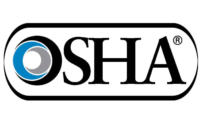The problem with the OSHA rate
Too often it is the only measure of safety performance

I have found that the companies that do not really ‘get’ safety and health measure their entire program on the OSHA rate (recordable injuries and illnesses). That is all they care about,” says a former OSHA official.
“If their rate is declining and/or it is lower than their industry average and they have not had a fatality or a serious injury then in their mind all is good and they are managing a good program,” he says. “Safety and health are not an issue unless the rate has risen or there has been an accident or a fatality. Even at the local level many contractors are hired based on having an OSHA rate below the industry average.”
Origins of the emphasis
The emphasis on OSHA recordables goes back to the early 1980s. It is the result of what’s call “unintended consequences.” In the early ’80s, OSHA focused on not inspecting companies if their injury and illness rate (OSHA rate) was below a certain number. This was followed by the start of VPP, where membership in the VPP was tied to the OSHA rate – and still is. The OSHA rate is also tied into the SHARP program (recognizing safety and health achievement in small businesses). OSHA’s main targeting systems are also tied to the OSHA rate including the data initiative data collection.
DEKRA, a global consultancy, states on its website that it is time to get more proactive in tracking safety performance. The problem, according to DEKRA, is how many companies have made use of the OSHA recordable rate. Many employers look at the metric as “all insightful” as to how they should view their company's performance in safety. Plus, it simplified how to view performance: “‘I can boil it down to this one number,” according to DEKRA.
There's no looking at potential. The OSHA rate simply looks at the severity of the injury from the event. That's it. DEKRA’s research in serious injury and fatality prevention shows that SIF prevention is all about identifying and mitigating potential.
OSHA advocates leading metrics
Even OSHA sees the value in using a broader dashboard of safety and health performance measures. States OSHA on its website: “Many employers are familiar with lagging indicators. Lagging indicators measure the occurrence and frequency of events that occurred in the past, such as the number or rate of injuries, illnesses, and fatalities. While lagging indicators can alert you to a failure in an area of your safety and health program or to the existence of a hazard, leading indicators are important because they can tell you whether your safety and health activities are effective at preventing incidents. A good safety and health program uses leading indicators to drive change and lagging indicators to measure effectiveness.
“OSHA encourages employers to get started today. Leading indicators can improve organizational performance in a variety of ways. Employers may find that leading indicators can:
- Prevent workplace injuries and illnesses.
- Reduce costs associated with incidents.
- Improve productivity and overall organizational performance.
- Optimize safety and health performance.
- Raise worker participation.”
Looking for a reprint of this article?
From high-res PDFs to custom plaques, order your copy today!








